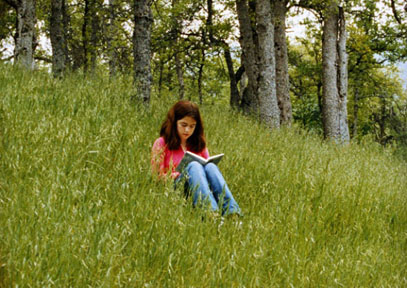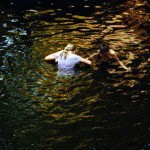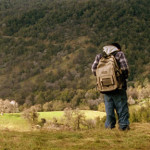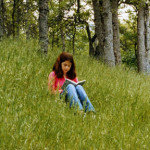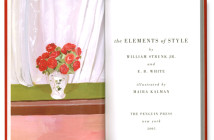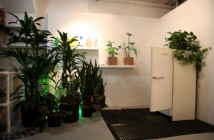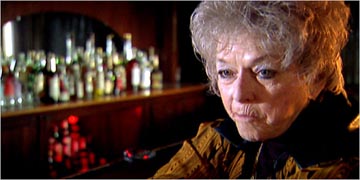Sharon Lockhart’s newest look at childhood, Pine Flat, was shown at the Harvard Film Archive, in conjunction with Pine Flat Portrait Studio, a series of 19 portraits at Harvard’s Sackler museum, made of the kids in the film. The film has twelve, ten-minute segments in entirety, each segment with a leader of black pausing before it.
Pine Flat, opens with a wall of magnum-sized, snow-covered trees. Out of the pensive storm, we find a young girl—or portrait, within the film. The girl is poised still and is reading from her book in all of her quiet grace on the hillside, in the idyllic, swaying grass. I was tortured by the even keel this girl. The remainder of children, predominantly boys, would prove to be in environments which seemed much more suitable and seemingly ‘natural’ to them, less contrived or forced.
Our audience was told in the intro, that along with their parents, Lockhart had visited many spots in the area; this was in a small town in the foothills of the Sierra Nevada Mountains of California, and the artist rested on places of her choosing after discussing it with the child who would be filmed and his or her parents, as part of the whole location deciding team. Lockhart, it turns out, moved to the area and lived there for three years.
Pine Flat had developed from the ashes of another project first intended. Linda Norden, former contemporary curator for the Fogg Art Museum, also mentioned that Lockhart used an Aaton camera for the film, a film camera historically used by documentary filmmakers, and with which you can get only up to ten minutes per roll, as this is how long a roll lasts—this clearly dictating the ten-minute stretches she decided upon for her twelve filmed segments.
Becky Allen, with whom Lockhart frequently collaborates, was hired on to do the sound, which—truly adds a dimension sound should be adding to film. The subtleties and specific junctures where the sound levels increase and recede are right on within the piece, and guide to clearly give new meaning to what it is we’re viewing. For example, in the sixth segment, we see a young boy in wait for his bus in the morning - terribly conscious of his parameters, stoping just at the edges of the camera frame. The mechanics of our everyday life - what is natural, how close are we to anything natural? Watching the boy listening to the birds before he boards, and the unmistakable violence of the bus’ intrusion.
Now we have three teens; two young men and one young woman rustling about in the woods, at a bit of a distance from us—chasing after one another, around a group of trees. They fall to the ground onto one another and are beginning to wrestle, the girl standing by shouts out, “Kiss him! Kiss him!” - a skew of maturity suddenly appears, wondering what they have not yet discovered about themselves, about each other, about life.
The closing shot, the picture of a silhouetted and unsettling black tree amidst fog and snow appears—and another voice—the piece is wrapped up in a similar way to the beginning—the snow, letting us be aware that one year has passed, and though the feeling is much less hopeful and inviting than the intro, there is a voice that says to us, “Oh my God”.
The credits, which roll just after, have each name come up on its own, from the bottom of the screen to the top—solo, as if it were a tombstone given an individual space of remembrance.
Finally, I’m left wondering if any of segments were any less contrived or forced than others - when is it that the normalcy of the everyday escapes the routine, and becomes performance? I couldn’t help but experience this as a death - this loss of an innate ability for vulnerability and how quickly it leaves us. Ultimately, Pine Flat is an invitation to study where we become a part of a story of childhood and innocence and become aware of that loss.
Links:
Harvard Film Archive
Arthur M. Sackler Museum
"Pine Flat" was on view until October 14th at the Harvard Film Archive, located at the Carpenter Center at 24 Quincy Street in Cambridge, MA. Pine Flat Portrait Studio is on view until November 19th at the Arthur M. Sackler Museum at 32 Quincy St. in Cambridge, MA
All images are courtesy of the artist and, Harvard Film Archives, and Barbara Galdstone Gallery.

